From N.N. Bhattacharyya, "The Geographical Dictionary -- Ancient and Early Medieval India" 1991, Munshiram:
Mujavant, Mujavat >A people that took their name from Mujavant, a mountain in the Himalayas.
They are mentioned along with the Mahavrsas, Gandhaaris and Baalhikas in AV V.22.5-14. They are also mentioned in Taitt. Sam. I.8.62; Kaathaka Sam.IX.7, XXXVI.14; Mait. Sam. I.4.10.20; Vaaj. Sam. III.61; Sat. Br.>II.6.2.17; Baudh. D.S. II.5
I found the following references in Macdonell and Keith, Vedic Index, 1958, Motilal:
MUjavant is the name of a people who, along with the mahAvRshas, the gandhAris, and the balhikas, are mentioned in the Atharvaveda (v.22,5.7.9.14 cf. baudhAyana Srauta sUtra, ii.5) as dwelling far away, and to whom fever is to be banished. Similarly in the yajurveda saMhitAs (TaittirIya S, i.8,6,2;Kathaka S, ix.7; xxxvi.14; maitrAyaNI s, i.4,10.20; vAjasneyi s, iii.61; Satapatha b, ii.6,2,17) the mUjavants are chosen as a type of distant folk, beyond which rudra with his bow is entreated to depart. In the Rgveda (x.34,1) soma is described as maujavata, 'coming from the mUjavants,' or, as yAska (Nirukta, ix.8) takes it, 'from mount mUjavant.' The Indian commentators (mahIdhara on vAjasneyi s, loc.cit.; sAyaNa on RV. i.161,8; baudhAyana Srauta sUtra and prayoga, cited by Hillebrandt, vedische mythologie, 1,63) agree with yAska in taking mUjavant as the name of a mountain, and though Hillebrandt (op.cit., 1,65) is justified in saying that the identification of mUjavant by Zimmer (Altindisches leben, 29) with one of the lower hills on the south-west of kashmIr lacks evidence, it is not reasonable to deny that mUjavant was a hill from which the people took their name. yAska (loc. cit. cf. siddhAnta kaumudI on pANini, iv.4,110, where instead of
maujavata in RV x.34, maunjavata is read) suggests that mUjavant is equivalent to munjavant, which actually occurs later, in the epic (mahAbhArata, x.785; xiv,180) as the name of a mountain in the himAlaya.
Georges Pinault pointed to the concordance between Vedic and Tocharian: amśu ~~ ancu, 'iron' (Tocharian). Amśu is a synonym for Soma (as Louis Renou noted that Rigveda is present in nuce, 'nutshell' in the themes related to Soma). The direction of borrowing amśu ~~ ancu is a matter to be studied further in historical linguistic studies, but is relatable to a date prior to 1800 BCE, the date of the Tarim mummies in Tushara (Tocharian). Tushara are mleccha (meluhha).
The Tarim mummies are a series of mummies discovered in the Tarim Basin in present-day Xinjiang, China, which date from 1800 BCE to the first centuries BCE. Many centuries separate these mummies from the first attestation of the Tocharian languages in writing. A 2008 study by Jilin University that the Yuansha population has relatively close relationships with the modern populations of South Central Asia and Indus Valley, as well as with the ancient population of Chawuhu. (Mitochondrial DNA analysis of human remains from the Yuansha site in Xinjiang Science in China Series C: Life Sciences Volume 51, Number 3 / March, 2008). The scientists extracted enough material to suggest the Tarim Basin was continually inhabited from 2000 BCE to 300 BCE and preliminary results indicate the people, rather than having a single origin, originated from Europe, Mesopotamia, Indus Valley and other regions yet to be determined.(Amanda Huang https://archive.today/bK4h).
The Samskritam expression túṣāra, 'frost, snow' is consistent with the Tushara ~~Tocharian cognates since Muztagh Ata is a high Himalayan mountain (24,758 ft.) cognate Mujavant was the mountain from which Soma was traded. Frits Staal has indicated possible routes for such trade. (Staal, Frits, 2004, in: Three mountains and seven rivers in: Hino, Shoun and Toshihiro Wada, 2004, Three mountains and seven rivers: Prof. Musashi Tachikawa's Felicitation Volume, Delhi, Motilal Banarsidass, pp.3-24). This trade in Soma (or, amśu ~~ ancu) might have occurred anytime after 7th millennium BCE, or 4th millennium BCE, the dates indicated for Rigveda, respectively, by astronomical/ archaeological or language evidence contained in the text.
http://bharatkalyan97.blogspot.in/2015/03/a-new-start-for-vedic-and-ie-studies.html
![]()
Plate 1: The Hellenistic World and the Early Silk Road. This sketch is based on the other maps about Hellenistic World and the Silk Road, especially the one in Hiebert, et al 2008: 43. The countries, areas, cities, and towns along the early Silk Road in this sketch are oriented on the ancient Chinese historical books about the Western Regions and the records from the Classical authors as well as the archaeological sites discovered recent years. There are many unresolved and disputable issues in it.
http://wp.chs.harvard.edu/chs-fellows/2014/10/03/hellenistic-information-in-china/
![]()
![]()
Sulbasutras: Indian Texts on Sacred Geometry
BY: PARAMESWARAN MURTHIYEDATH (2005)
![]()
Nov 26, CANADA (SUN) — Vedic instruction on geometric design of sacred structures, spaces.
The Sulbasutras deal with geometrical constructions, a large majority of them for the purpose of carrying out Vedic rituals at precisely constructed altars and similar such ends, that are popularly believed to date to the millennium before Christ or the end of the Vedic age. Of these, Baudhayana’s Sulbasutra is believed to date to the 8th century B.C. Later, other authors including Apastamba, Manava, Katyayana,Satyasadha Hiranyakesin, Vadhula, Varaha and Kathaka composed sulbasutras as well, although the chronological order in which these texts were composed remains unknown as yet.
The first five of the sulbasutras is found available in text form while the manuscripts of the others are known to exist. Still later, the commentaries of Kapardi, Karavinda, Sundararaja and Dwarkanath aappeared. In more recent times there have been commentaries written by Thibault and Van Geldner in the second half of the 19th century A.D., followed by S. N. Sen and the last by A.K. Bag in 1983.
Baudhayana’s work and his successors
The Baudhayana Sulbasutram (BSS) is possibly the most important sulbasutra text since it contains the principles of prescribed geometry for the Vedic altar space. Baudhayana, after dwelling upon the basic geometrical construction concepts prevalent during his and earlier times in the first set of sutra, described the Vedic altar space in general and then the 14uttaravedi forms. His descriptions of the uttaravedis reveal a remarkable approach to geometry and the text serves as a model for technical accuracy and brevity. The order present in the geometrical analysis as well as in the flow of the text, its subject matter, reveal great clarity of thinking in the author’s mind and set the text apart from its later counterparts.
The later sulbasutras either dealt with matters mentioned in Baudhayana’s work and developed it further, or discussed issues that were omitted from this earlier work. Some of these works may be considered supplementary material. Katyayana’s text described how the construction of the uttaravedis may range from a size of 7.5to 101 purusam square in a clear narrative style. Similarly, Manava documented the examples of 8.5 square purusam uttaravedis, something that neither Baudhayana nor Katyayana had done. Manava further stated a new approach to the use of the purusam measure and a new unit of measure called pancangi. While a continuity of subject-matter may be observed in Katyayanaand Manava’s work, Apastamba’s output did not conform to the trend set by Baudhayana. No clear enhancement or elucidation of former works on geometry was discernible in his work. He described two forms of brick layout for the pithan syenaciti and new kanka and alaja citis, and his work on this proved to be very popular.
Recent Interest in the Sulbasutras
The cryptic style of the sulbasutra texts was essentially suited to the Vedic ritualists and in the wake of a break with traditional rituals and practices after the Vedic period, the texts could have lost their popular relevance. In some cases, this seems to be exactly what happened- a disconnect between the content of the text and the purposes to which it no longer was applicable. This made it very difficult to retrieve the sulbasutras completely at a later date when scholastic interest in them was reawakened. Therefore, it is doubtful how far the earlier mentioned commentaries are capable of revealing the real geometrical contents of the sulbasutra in all their glory.
The work done on the sulbasutras since the 19th century A.D. has, however, been followed with interest in recent times. It is clear that the major concern of the sulbasutra is geometry alone, although some observations of the srauta nature and certain mathematical operations connected with geometry also find mention in these texts. It is worth noting that the geometry of the sulbasutra has more affinity to modern engineering practice than to theoretical mathematics of the present times. This is natural given that the Vedic geometers were more concerned with accurate constructions of ritual altars and the altar space than with proving a theorem.
The essence of the sulbasutras lies more in the concepts discussed therein than in the authors’ use of grammatical accentuation. The latter was incidental Baudhayana employed the then prevalent style of the sutra and the other authors followed in a similar fashion. One of the reasons for the perhaps inaccurate reproduction of the geometry of the sulbasutra may be the approach adopted by later commentators, an approach that was affected by strongly pre-conceived grammatical notions. Instead, the sulbasutras ought to be approached with an inquiring mind regarding the meanings of the words in association exclusively with the subject under discussion. The modern Indian commentators further tend to find arithmetical and mathematical references in the sulbasutra, references that are unlikely to have been intended as such by the authors. One of the acid tests for the accuracy of presentation of a particular meaning is whether it may result in constructions of the Vedic style. Thus, while?2 is of great concern to the sulbavid (author of a sulbasutra) the same may not be said of?3 which is irrelevant to Vedic constructions, although more recent commentators have interpreted the sulbasutras to ascribe relevance to this numerical value.
The sulbasutra on the other hand reveal a great degree of development of geometry not only as applied to techniques of constructions, but also extending to conceptual symmetries and an unknown methodology of evolution of the conceptual approach to such geometry. While this is the very approach to basic geometry, it then becomes a passionate progress to various shapes of the uttaravedis. In fact, the very geometry of the mahavedi, in which the uttaravedi is an element, is of unique conceptual beauty. The 30-36-24 regular trapezium of the mahavedi contained several triples in their construction format such as 3-4-5, 12-5-13,15-9-17, 35-12-37 which could be employed to attain the accuracy of layout. The area of the mahavedi thus being 972 square of 18 prakramam, the uttaravedis were initially of 1/3rd of 972 and at the same time the square of 18. Then 1.3rd of 324 is 108, an important number since ancient times for obvious reasons. A trapezium shape of 10-12-8 amounting to an area of 108 thus became the smallest size of the uttaravedi in prakramam measures.
Figure 1: Mahavedi
The taper of this trapezium narrowing down to the east is impressed upon by all the sulba texts. The eastward striving nature of the uttaravedi (for, gods reside at the east) is of paramount importance to the vedic rituals and one could not possibly say for what long period of time it took, to later develop into highly complex and realistic geometrical shapes in the form of three later uttaravedis, meant as kamyaciti. In the further development of the uttaravedis, the concept of “saptavidha: sampadyate”, meaning that the area of the uttaravedi should follow a certain pattern became a great spirit of enquiry. The eastward striving nature and this new concept put together developed into highly complex and yet beautifully conceived geometrical shapes of symmetry perhaps unparalleled in the history of geometry and mathematics. It is at an unknown point of time after that Baudhayana stood and decided to document it for posterity. And it is this very thing that the modern commentators, in a way, failed to redeem and realise.
At the very first, the term “saptavidha:” was insufficiently interpreted to mean as 7.5 times the purusam measure, whereas it was really referred to as the 7 stages of development from the 7.5 to the 101 as area and corresponding sizes. Later, Katyayana described this in good detail, which also went properly not delineated. While Manava updated to the mathematical order of his time and described several types of equalities and arithmetical series, it was ironically Apastamba who was accredited with several modern mathematical interpretations. As a whole, it would be fair to state that the magnificent total geometry of the sulbasutra remains undiscovered as on date. The BSS contains 21 major sutra sets, of which the first two describe basic geometrical constructs. They contain basic units of measurements, conversions from one shape to another of equal area, notions of right angles and the value of ?2 etc. Sutra 3 and 4 describe the geometry and general concepts of the total altar space. Sutra 5 and 6 are general in nature as well, but in sutra 7 an initiation of the geometrical complexities to follow is indicated by the description of the new garhapatyaciti of 21 bricks.
The general layout of the pracinasala and mahavedi, with a detailed definition of the position of the uttaravedi, is already clear at this point, since it uses the rathacakraciti with its well-defined centre for the purpose. The next 14 sutras are devoted to the various formats of the uttaravedi.
After describing 2 brick-laying orders of the pithan syenaciti, syenaciti of pancapatri, sadpatri, kanka and alaja forms are described. These distinct bird shaped altars used different methods to fulfill the “saptavidha:” concept with the7.5 purusam square as the basis. All of them are based on clear symmetries and on basic formative squares and rectangles. Next, two simple triangular praugaciti are described. Then the geometrical content is intensified to describe the rathacakraciti, 3 dronociti, the smasanaciti, and the kurmaciti. Esoteric compositions are displayed in the final sutra which goes beyond the bounds set by basic, definitive principles. It is possible that this process of creative design and constructions was already declining before the time of Baudhayana and this motivated him to create the BSS text.
While going through the BSS text, one may doubt that all of the citi formats described by him were in practice during his time since the descriptions contain varying levels of details, though each of the descriptions could be termed as sufficient in itself. It is here and in the unknown nature of the time line that the strength of the sruti is revealed in its capacity to travel intact wide expanses of time. Indeed there are very specific examples of such demonstration of strength of the system in its further travel to our present times. What is more demonstrative in the second period of about 2800 years since Baudhayana is that the text travelled intact almost without its meanings really taken in. And yet there are words in the BSS which could have easily got transformed into something else but did not. Then there are such instances where certain versions of the manuscripts tried to inject words into the body text which were found to be stoically resisted by the extant contents.
In comparison, the later sulbasutra texts are explanatory in nature with some additional altar designs and some mathematical updates by the authors. These have definitely added strength to the information system on the one hand and then silently declared that they have stepped out of the sruti circuit to certain extent. The very sruti system might indeed have had several parallel flows where the sulbasutra and that of the rituallistic practices could have existed even without mixing. Where some amount of cross references only existed without one being part and parcel of the other is a distinct possibility. And possibilities for further studies are plentiful, as the present attempt of delineation of the sulbasutra could open up a better historical perspective and the timeline of the progress of not only geometry and mathematics of the period of first millenium BC but a host of other related subjects. It provides a better clarity to matters beyond the second millennium BC as well. For the geometrician of today and such enthusiasts, a large volume of exercise is provided by Katyayana, as his formulae for taking the citi forms from 7.5 to 101 purusam squares remain untested and untried.
A Few Sutras
An extract from the book
with Commentary by Parameswaran Murthiyedath
Sutra 12 (Kankaciti)
Sutra 12.1
Kankacita etenatma
Puccam ca vyakhyatam
(The Kankacita defined here will have a body and a tail)
The Kankacita is known to have the shape of a heron.
Sutra 12.2
sirasi pancopadadhyat
tasyakrtirvyakhyata
sirasi pancopadadhya
ttasyakrtirvyakhyata
(the head will be obtained as 5 by definition of its shape)
As per the definition the head will be obtained as 5.
This states that the length of the head along the east west is 5 aratni from the body. With the same words a meaning that the area of the head is 5 sq. aratni could also be derived. Both meanings are true and so meant.
Sutra 12.3
Saptapancasaddaksine paksa upadadhyat
tathottare
Saptapancasaddaksinepaksa upadadhya
ttathottare
(5 and 7 to south the wing will be obtained next the north)
The wing at south will be obtained as 5 and 7and likewise the north. Again, The wing tips are at a distance of 12aratni’s to south (5+7) and at the same time it means that the area of the wings are 57 sq. aratni.
Sutra 12.4
Vyayamena sapradesna paksayorapanamah
pancamabhagiyardhyabhih sat sat patrani kuryat
adhyardhavasisyate vyayamena
sapradesnapaksayorapanamah
pancamabhagiyardhyabhih
sat sat
patrani kuryat
adhyardhavasisyate
(by vyayama measure with the pradesa the wings bent with the pancami and adhyardha six and six wing cuts as stated an adhyardha will be balanced)
Figure 2: Karika city layout (BSS-12.2-6)
(The wings will be set out at a measure of 1 vyayama added with 1 pradesa at an angle and the wings tips will have six notches of a measurement of 1 pancami by 1 pancami and a half. An adhyardha will be balanced)
The configuration of the wings are made by the diagonal of a square of 108A first taken forward and then retraced to give a mirrored bent. The sutra further categorically states that the wing tips configuration is with 6 nos of 1aratni by 1 adhyardha cuts. This adds to the area of 54 sq. aratni and additional 3aratni and the statement of 57 sq. aratni are now established. The statement ‘adhyardhavasisyate’ is about the excess area resulted amounting to 1½ aratni in the configuration which will be later adjusted by the leg trimming of the tail.
Fig. 12.1 given here shows the citi geometry. First a basic square 1-2-3-4 will be established with side as 144A, deriving from the statement of ‘saratnipradesa’. The south end of the wings from which the wing tips take off is line 9-10, parallel to1-4 and at a distance of 12 aratni (288A). Line 4-8 is the diagonal of a square of 108A as side. Line 8-9 is mirrored from line 4-8. Thus the wing formation of 4-8-9-10-13-1 is established. The six wing tips are formed by the diagonals of boxes of an aratni by an adhyardha (1½ aratni) as sides, as shown within9-10-11-12.
Sutra 12.5
taya pucchasyavastat
padavaratnimatravaratnyantaralau
pradesavyasau bhavatah
tayoravastadabhito
dvaudvavastamabhagau pragbhedavupadadhyat
taya pucchasyavastat
padavaratnimatravaratnyantaralau
pradesavyasau bhavatah
tayoravastadabhito
dvaudvavastamabhagau
pragbhedavupadadhyat
(At the backside of the tail feet of an aratni length in an aratni gap with 1 pradesa as width at the back and near as 2 and 2, and 8 sided with a forward cut will be obtained)
The tail is having a forward cut of 1 aratni length and 1 pradesa as width of sides, in a gap of 1 aratni, and thus having 8 sides split into two as forward cut.
The tail portion of 15-14-16-17 contains the details mentioned above. Thus the tail have two cuts of 1 aratni square which is modified to form the root and two such feet are placed touching each other as stated forming an 8 sided cut in total.
A statement like ‘pancadasa pucche’ is judiciously left out for the reason of the cut in the tail, though the overall outline agreed to such a statement. Further in sutra 12.8 the placement of two astamsi bricks at the tail to obtain this configuration are mentioned, to which the presentation here corresponds.
Figure 2: Karika city layer 1
Sutra 12.6
evam saratnipradesah saptavidhah sampadyate
evam saratnipradesah
saptavidhah sampadyate
(With only the aratni and pradesa the saptavidhah concept will be achieved)
Thus with the aratni and pradesa measures alone, the saptavidhah concept will be achieved. Indeed, the altar shape graphically feeds back an area report of exactly 7.5 times the purusam square, as could also be seen from the calculation of area given here.
Table 1: Area of Kankacit
Sutra 12.7
athestakanam vikarah
pancamabhagiyah
savayavah
padestakam caturbhih
parigrhniyadardhapradesenadhyardhapradesena
Figure 4: Karika city, Layer 2
pradesena pradesasavises eneti
adhyardhestakam caturbhih parigrhniyadardhavyayamena
dvabhyamaratnibhyamaratnisavises eneti
tah sat
Figure 5: Karika city, Bricks
Athestakanam
Vikarah
pancamabhagiyah savayavah
padestakam caturbhih
parigrhniyadardhapradesenadhyardhapradesena
pradesena pradesasavises eneti
adhyardhestakam
caturbhih
parigrhniyadardhavyayamena
dvabhyamaratnibhyamaratnisavises eneti
tah sat
Now the bricks configuration with the pancami all over with the pada square brick with surrounded (sliced) ardha and pradesa and the adhyardha and pradesa and the adhyardha and pradesa with pradesa and a modified pradesa with the adhyardha brick from a square brick with the surrounded (sliced) half vyayama by two and by aratni and aratni modified like that six.
With pancami as the basic brick allover with the pada of a square brick, and the ardha, the adhyardhardha and pradesa sliced, the vyayama and the aratni sliced, the modified aratni consisting 6 bricks will be used.
However, some more bricks are found required and the lists of bricks are as given below:
Sutra 12.8
tasam
caturasrapadyah
sastamabhagah
padayorupadhaya
sesam yathayogam
yathasamkhyam yathaadharmam
copadadhyat
with these the caturasrapadyah and 8 divided part at the wings having placed balance as required in as many numbers as per rules be placed
The caturasrapadyah and the astamsi bricks having placed as the feet, the balance will be filled with the required numbers as per rules.
Table 2: Kanchita Bricks
Parameswaran Murthiyedath is a scholar of Vedic Mathematics. From "Kriti Rakshana", National Mission for Manuscripta.
The following table shows the various kingdoms, provinces and tribes mentioned in the epic
Mahabharata. As kingdoms they represent a geographical region that existed in ancient India which was then known as the
Bharatavarsha and as the
Jamvudvipa (the continent of the Jamvu tree). As tribes they existed at some geographical region at some point of time and moved to other regions or spread into multiple regions at different points of time.
An important passage in the
Mahabharata useful for anybody studying about the ancient kingdoms and tribes of Bharatavarsha is found at MBh 6.9 (Mahabharata, Bhishma Parva (volume 6), chapter 9).
Sanjaya told to
Dhritarashtra:- Listen to the names of the provinces as I mention them.
They are the
Kuru-Panchalas, the
Salwas, the
Madreyas, the
Jangalas, the
Surasena, the
Kalingas, the
Vodhas, the
Malas, the
Matsyas, the
Sauvalyas, the
Kuntalas, the
Kasi-kosalas, the
Chedis, the
Karushas, the
Bhojas, the
Sindhus, the
Pulindakas, the
Uttamas, the
Dasarnas, the
Mekalas, the
Utkalas; the
Panchalas, the
Kausijas, the
Nikarprishthas,
Dhurandharas; the
Sodhas, the
Madrabhujingas, the
Kasis, and the further-Kasis; the
Jatharas, the
Kukuras, O
Bharata; the
Kuntis, the
Avantis, and the further-Kuntis; the
Gomantas, the
Mandakas, the
Shandas, the
Vidarbhas, the
Rupavahikas; the
Aswakas, the
Pansurashtras, the
Goparashtras, and the
Karityas; the
Adhirjayas, the
Kuladyas, the
Mallarashtras, the
Keralas, the
Varatrasyas, the
Apavahas, the
Chakras, the
Vakratapas, the
Sakas; the
Videhas, the
Magadhas, the
Swakshas, the
Malayas, the
Vijayas, the
Angas, the
Vangas, the
Kalingas, the
Yakrillomans; the
Mallas, the
Suddellas, the
Pranradas, the
Mahikas, the
Sasikas; the
Valhikas, the
Vatadhanas, the
Abhiras, the
Kalajoshakas; the
Aparantas, the
Parantas, the
Pahnabhas, the
Charmamandalas; the
Atavisikharas, the
Mahabhutas, O sire; the
Upavrittas, the
Anupavrittas, the
Surashatras,
Kekayas; the
Kutas, the
Maheyas, the
Kakshas, the
Samudranishkutas; the
Andhras, and, O king, many hilly tribes, and many tribes residing on lands laying at the foot of the hills, and the
Angamalajas, and the
Manavanjakas; the
Pravisheyas, and the
Bhargavas, O king; the
Pundras, the
Bhargas, the
Kiratas, the
Sudeshnas, and the
Yamunas, the
Sakas, the
Nishadhas, the
Anartas, the
Nairitas, the
Durgalas, the
Pratimasyas, the
Kuntalas, and the
Kusalas; the
Tiragrahas, the
Ijakas, the
Kanyakagunas, the
Tilabharas, the
Samiras, the
Madhumattas, the
Sukandakas; the
Kasmiras, the
Sindhusauviras, the
Gandharvas, and the
Darsakas; the
Abhisaras, the
Utulas, the
Saivalas, and the
Valhikas; the
Darvis, the
Vanavadarvas, the
Vatagas, the
Amarathas, and the
Uragas; the
Vahuvadhas, the
Kauravyas, the
Sudamanas, the
Sumalikas; the
Vadhras, the
Karishakas, the
Kalindas, and the
Upatyakas; the
Vatayanas, the
Romanas, and the
Kusavindas; the
Kacchas, the
Gopalkacchas, the
Kuruvarnakas; the
Kiratas, the
Varvasas, the
Siddhas, the
Vaidehas, and the
Tamraliptas; the
Aundras, the
Paundras, the
Saisikatas, and the
Parvatiyas, O sire.
There are other kingdoms, O bull of
Bharata's race, in the south.
They are the
Dravidas, the
Keralas, the
Prachyas, the
Mushikas, and the
Vanavashikas; the
Karanatakas, the
Mahishakas, the
Vikalpas, and also the
Mushakas; the
Jhillikas, the
Kuntalas, the
Saunridas, and the
Nalakananas; the
Kankutakas, the
Cholas, and the
Malavayakas; the
Samangas, the
Kanakas, the
Kukkuras, and the
Angara-marishas; the
Samangas, the
Karakas, the
Kukuras, the
Angaras, the
Marishas: the
Dhwajinis, the
Utsavas, the
Sanketas, the
Trigartas, and the
Salwasena; the
Vakas, the
Kokarakas, the
Pashtris, and the
Lamavegavasas; the
Vindhyachulakas, the
Pulindas, and the
Valkalas; the
Malavas, the
Vallavas, the further-Vallavas, the
Kulindas, the
Kalavas, the
Kuntaukas, and the
Karatas; the
Mrishakas, the
Tanavalas, the
Saniyas; the
Alidas, the
Pasivatas, the
Tanayas, and the
Sulanyas; the
Rishikas, the
Vidarbhas, the
Kakas, the
Tanganas, and the further-Tanganas.
Among the tribes of the north are the
Mlecchas, and the
Kruras, O best of the
Bharatas; the
Yavanas, the
Chinas, the
Kamvojas, the
Darunas, and many
Mleccha tribes; the
Sukritvahas, the
Kulatthas, the
Hunas, and the
Parasikas; the
Ramanas, and the
Dasamalikas.
These countries are, besides, the abodes of many
Kshatriya,
Vaisya, and
Sudra tribes.
Then again there are the
Sudra-abhiras, the
Dardas, the
Kasmiras, and the
Pattis; the
Khasiras; the
Atreyas, the
Bharadwajas, the
Stanaposhikas, the
Poshakas, the
Kalingas, and diverse tribes of
Kiratas; the
Tomaras, the
Hansamargas, and the
Karamanjakas.
These and other kingdoms are on the east and on the north.
All the western Indian kingdoms were known by the general name
Bahlika (Vahika, Vahlika and Valhika are variations of the name) meaning
outsider. Thus these people were considered as
outsidersof the
Vedic culture. However, the name Bahlika is sometimes used to denote a kingdom within the present Punjab, different from
Madra,
Sindhu,
Kekeya,
Gandhara or
Kamboja. As per the epic
Mahabharata, the
Kuru king
Santanu, a forefather of
Kauravas and
Pandavas, had a brother who ruled the Bahlika kingdom and a Bahlika king took part in the war aiding
Duryodhana. He was killed by the
Pandava Bhima.
References in Mahabharata
Bahlika mentioned as a kingdom of Ancient India (Bharata Varsha)
…the Angas, the Vangas, the Kalingas, the Yakrillomans; the Mallas, the Suddellas, the Pranradas, the Mahikas, the Sasikas; the Valhikas, the Vatadhanas, the Abhiras, the Kalajoshakas; the Aparantas, the Parantas, the Pahnabhas, the Charmamandalas; the Atavisikharas, the Mahabhutas, the Upavrittas, the Anupavrittas, the Surashatras, Kekayas; the Kutas, the Maheyas, the Kakshas, the Samudranishkutas; the Andhras…
The non-Vedic natue of Bahlika culture
Words of Narada
The Valhika race is the stain of the Earth (12,328). This mentione is found in the midst of a passage that describes how
Krishna Dwaipayana Vyasa studied
Vedas, classified it and spread it through his four disciples into the whole world.
Narada is telling these words to Vyasa:-
The stain of the Vedas is the suspension of their recitation. The stain of the Brahmanas is their non-observance of vows. TheValhika race is the stain of the Earth. Curiosity is the stain of women.
Words of Vidura
The scum of the Vedas is want of study; of Brahmanas, absence of vows; of the Earth, the Vahlikas; of man, untruth; of the chaste woman, curiosity; of women, exile from home. The scum of gold is silver; of silver, tin; of tin, lead; and of lead, useless dross. (5,39)
Dispute between Karna and Shalya in the midst of Kurukshetra War
Karna and Shalya were two generals in the Kaurava army during the Kurukshetra War. They engaged in a verbal dispute, owing to their deslike of each other. Both of them hailed from a different culture. Shalya was from the west, being the king of Madra Kingdom in the Bahlika region. Karna was from the east, being the king of Anga Kingdom. Both these kingdom existed at the fringes of Vedic culture, practiced in its normal form, mainly in Kuru - Panchala kingdoms in the middle.
The actual location of the Bahlika culture
Karna said, Listen with devoted attention to this, O ruler of the Madras (Shalya), that was heard by me while it was recited in the presence of
Dhritarashtra. In Dhritarashtra’s abode the
Brahmanas used to narrate the accounts of diverse delightful regions and many kings of ancient times. An old Brahmana while reciting old histories, said these words, blaming the
Vahikas and Madrakas, "One should always avoid the Vahikas, those impure people that are out of the pale of virtue, and that live away from the
Himavat and the
Ganga and
Saraswati and
Yamuna and
Kurukshetra and the
Sindhu and its five tributary rivers. (8,44)
The food habbits of Bahlikas in the town of Sakala
I remember from the days of my youth that a slaughter-ground for kine and a space for storing intoxicating spirits always distinguish the entrances of the abodes of the (Vahika) kings. On some very secret mission I had to live among the Vahikas. In consequence of such residence the conduct of these people is well known to me. There is a town of the name of
Sakala (modern day
Sialkote), a river of the name of
Apaga, and a clan of the Vahikas known by the name of the
Jarttikas. The practices of these people are very censurable. They drink the
liquor called Gauda, and eat
fried barley with it. They also eat
beef with garlic. They also eat
cakes of flour mixed with meat, and
boiled rice that is bought from others. Of righteous practices they have none. (8,44)
Bahlika horses
Bahlika region was famous for its horses. They were used by kings in wars.
- Vasudeva Krishna also gave unto Arjuna hundreds of thousands of draft horses from the country of the Valhikas as his sister, Subhadra’s excellent dower. (1,223)
- Bahlika breed of horses were one among the type of horses employed in Kurukshetra War:- Many steeds of the Vanayu, the hilly, the Kamvoja, and the Valhika breeds, with tails and ears and eyes motionless and fixed, possessed of great speed, well-trained, and ridden by accomplished warriors armed with swords and lances, were seen (7,34)
- Bhagiratha gave away a hundred thousand horses of the Valhika breed, all white of complexion, adorned with garlands of gold. (13,103)
- Dhritarashtra wished to give sixteen cars made of gold, each drawn by four excellent and well-adorned steeds of uniform colour and of the Vahlika breed to Vasudeva Krishna who came to talk to him on behalf of the Pandavas (5,86)
Kings of Bahlika
Bahlika the son of Pratipa
Bahlika the son of Pratipa is mentioned in the following passages in Mahabharata:-
Kuru king
Dritarashtra's words to his son
Duryodhana:- Even the eldest son may be passed over and deprived of the kingdom, and younger sons may, in consequence of their respectful behaviour to the aged, obtain the kingdom. So also, conversant with every virtue there was my father’s grandfather, king
Pratipa, who was celebrated over the three worlds. Unto him, were born three sons, Of them,
Devapi was the eldest,
Vahlika// the next and **Santanu of great intelligence, who was my grandfather, was the youngest. Devapi, endued with great energy, was virtuous, truthful in speech, and ever engaged in waiting upon his father. But that best of kings had a skin-disease. Popular with both the citizens and the subjects of the provinces, respected by the good, and dearly loved by the young and the old, Devapi was liberal firmly adhering to truth, engaged in the good of all creatures, and obedient to the instructions of his father as also of the Brahmanas. He was dearly loved by his brother Vahlika as also the high-souled Santanu. Great, indeed, was the brotherly love that prevailed between him and his high-souled brothers. In course of time, the old and best of kings, Pratipa, caused all preparations to be made according to the scriptures for the installation of Devapi (on the throne). Indeed, the lord Pratipa caused every auspicious preparation. The installation of Devapi, however, was forbidden by the Brahmanas and all aged persons amongst the citizens and the inhabitants of the provinces. Hearing that the installation of his son was forbidden, the voice of the old king became choked with tears and he began to grieve for his son. Thus, though Devapi was liberal, virtuous, devoted to truth, and loved by the subjects, yet in consequence of his skin-disease, he was excluded from his inheritance. The gods do not approve of a king that is defective of a limb. Thinking of this, those bulls among Brahmanas forbade king Pratipa to install his eldest son. Devapi then, who was defective of one limb, beholding the king (his father) prevented (from installing him on the throne) and filled with sorrow on his account, retired into the woods. As regards Vahlika, abandoning his (paternal) kingdom he dwelt with his maternal uncle. Abandoning his father and brother, he obtained the highly
wealthy kingdom of his maternal grandfather. With Vahlika’s permission, Santanu of world-wide fame, on the death of his father (Pratipa), became king of
Kuru Kingdom. (5,149)
- Kuru King Pratipa had three sons, viz Devapi, Valhika and Santanu. (1,95)
- Bhishma consulted his uncle Valhika to clear doubts about giving in marriage, the tree maidens that he brought from Kasi Kingdom to his step-brother Vichitravirya (13,44).
- Yudhisthira addressed Bahlika as son of Pratipa, in a message sent to Kauravas.(5,23)
- Yudhisthira also addressed the Kurus of the Pratipa dynasty viz the Vahlikas(5,57)
Bahlika the father of Somadatta
The lineage that links Bahlika with the Pandavas and Kauravas, as per
Mahabharata is as follows:-
- Pratipa -> Devapi (became a sage)
- Pratipa -> Bahlika -> Somadatta -> Bhurisravas, Sala
- Pratipa -> Santanu -> Bhishma
- Pratipa -> Santanu -> Vichitravirya -> Dhritarashtra -> Kauravas
- Pratipa -> Santanu -> Vichitravirya -> Pandu -> Pandavas
A Bahlika king took part in the
Kurukshetra War. He was related to the
Kauravas and the
Pandavas, and was a king in the Kuru dynasty. This make Bahlika older than
Bhishma, making him the oldest among, the warriors who fought the
Kurukshetra War. But there is references in
Mahabharata that
Bhishma was the oldest warrior in the
Kurukshetra War. So there could be some missing king in this lineage of Bahlikas. It could be that Somadatta's father who took part in the war was the son of the Bahlika mentioned at (Mbh 1,95) as Pratipa's son.
- Pratipa -> Devapi (became a sage)
- Pratipa -> Bahlika -> Bahlika -> Somadatta -> Bhurisravas, Sala
- Pratipa -> Santanu -> Bhishma
- Pratipa -> Santanu -> Vichitravirya -> Dhritarashtra -> Kauravas
- Pratipa -> Santanu -> Vichitravirya -> Pandu -> Pandavas
This makes the warrior Bahlika, contemporary to Bhishma and his son Somadatta, contemporary to Dhritarashtra. Somadatta's sons Bhurisravas and Sala also took part in the Kurukshetra War. Thus four Bahlika war-heroes, spanning three generations, fought the Kurukshetra war. King Bahlika was present in the self choice event of
Draupadi the princess of
Panchala Kingdom. (1,188). He also came to the Rajasuya sacrifice of
Pandava king
Yudhisthira, brought there by
Nakula (2-33,34). King Bahlika was present with the Kurus of
Hastinapura, on almost all the important events that happened in Hastinapura:- on the arrival of
Kunti with the young
Pandavas (1,126), on the occasion of a tournament of war-craft by the Kuru princes (1,136), When the Pandavas left
Hastinapura to the town of
Varanavata (1,145), during the play of dice (2-62,72,76,79)(3,13), during the planning of
Kurukshetra War (5-62,63) etc
- Bahlika king and his sons and grandsons disliked Duryodhana, but was allied to his fatherDhritarshtra and grandfather Bhishma (5-58,65,80,83,89,90,124,128,129,131
- Bhishma's rating of Vahlika as a car-warrior:-Vahlika is in my judgment, an Atiratha.(5,168)
Bhurisravas and Somadatta (denoted as Vahlika) were two among the eleven generals of Kaurava army, leading an Akshouhini of troops (5,156)
- Bhalika fught as a warrior in Kurukshetra War under the generalissimos viz Bhishma (6-17,45,48,59,60,76,82,93,97,103,105,118) and Drona (7-20,30,37,72,83,92,93,118,152
- Bahlika was slain by Bhima (7,154). Somadatta (7,159) and Bhurisravas (7,140) were slain bySatyaki in the Kurukshetra War. The death of all these three in the war is mentioned together at (8,1), (9-2,24,32,63), (10,9), (15-29,32) At (8,5), the slain Bahlika is describeds as grandfather of Dhritarashtra. At (11,22) he is described as Pratipa's son. This is the only two places where both the Bahlikas, the son of Pratipa and the father of Somadatta were described as same. King Bahlika's funeral rites were performed by Dhritarashtra (15-11,14)
- Pandava general Satyaki's father Sini, and Somadatta were of the same generation. They were enemies. When Sini lived at Surasena Kingdom, he battled with Somadatta and defeated him due to a dispute on a maiden (Vasudeva Krishna's mother Devaki). Satyaki and Somadatta's son Bhurisravas, were of the same generation and were enemies too. (7,141)
- Under the generalissimo Bhishma stood Warrior Sala who was a countryman of the Valhikas (6,20) .His battles are described at (6-61,86) (7-35,101,153,161). He is slain in battle, by some unknown hero, as his death is mentioned at (9,2), (18,5)
Other Bahlika kings
- A Bahlika king is mentioned as one among the 24 great kings (1,1)
- A Bahlika king is mentioned along with the kings present in Yama's court (2,8)
- Madra king Shalya is described as a Bahlika king (1-67,113) .Shalya's sister Madri also is described as princess of Valhika (Bahlika) (1,125)
- One among the eight kings who were the sons of a Janamejaya who himself was the son of Kuru, the founder of the dynasty was named Valhika (Bahlika). (Kuru -> Janamejaya -> Dhritarashtra, Pandu, Valhika, Nishadha, Jamvunada, Kundodara, Padati and Vasati the eighth.) (1,94)
Conquests of Karna
The Utpalas, the Mekalas, the Paundras, the Kalingas, the Andhras, the Nishadas, the Trigartas, and the Valhikas were all defeated by Karna in battle (7,4)
Conquests of Arjuna
The following passage from Mahabharara, gives glimpses of the contemporary kingdoms and tribes in the Bahlika area, ie the areas north west to the Kuru Kingdom.
Arjuna defeated the brave Kshatriyas of
Kashmira and also king Lohita along with ten minor chiefs. Then the Trigartas, the Daravas, the Kokonadas, and various other Kshatriyas advanced against him.
Arjuna then took the delightful town of Avisari, and then brought under his sway Rochamana ruling in Uraga (
Urug ?). Then
Arjuna, pressed the delightful town of Singhapura that was well-protected with various weapons. Then he fiercely attacked the regions called Suhma and Sumala. After pressing them with great force, brought the Valhikas always difficult of being vanquished, under his sway. Then Arjuna, taking with him a select force, defeated the
Daradas along with the
Kambojas. (2,26)
Tribute from Bahlika to Pandava king Yudhisthira
The people of Valhika gave unto
Yudhisthira as tribute ten thousand
asses, of goodly size and black necks and daily running two hundred miles, And those asses were of many shapes. And they were well-trained and celebrated all over the world. And possessed of symmetrical proportion and excellent colour, their skins were pleasant to the touch. And the Valhikas also presented numerous
blankets of
woollen texture manufactured in
Chin and numerous skins of the Ranku deer, and clothes manufactured from jute, and others woven with the threads spun by insects. And they also gave thousands of other clothes not made of cotton, possessing the colour of the lotus. And these were all of smooth texture. And they also gave soft sheep-skins by thousands. And they also gave many sharp and
long swords and scimitars, and hatchets and fine-edged
battle-axes manufactured in the
western countries and perfumes and jewels and gems of various kinds by thousands. (2,50)
Yudhisthira also got a car (chariot) from Bahlika king:-
Yudhisthira riding upon the car that had been given him by the king of Valhika, and attired also in royal robes, set out with his brothers, (to play dice in
Hastinapura). (2,52), (2,57)
Bahlika army in Kurukshetra War
The heroes from Bhalika were, king Bahlika, his son Somadatta and his grandsons Bhurisravas and Sala. Apart from them we find mention of Bahlika army along with the armies of other neighbouring kingdoms taking part in the
Kurukshetra War.
- the Kamvojas and with the Valhikas (6,75)
- king Vahlika with Vahlikas (6,82), (6,103)
- the Nishadas, the Sauviras, the Valhikas, the Daradas, the Westerners, the Northerners, the Malavas, the Abhighatas, the Surasenas, the Sivis, the Vasatis, the Salwas, the Sakas, the Trigartas, the Amvashthas, and the Kekayas (6,118)
- Yavanas and Paradas and Sakas and Valhikas, and Mlecchas (7,90)
- Valhikas with Karna (7,110)
- Sakas and Kamvojas and Valhikas and Yavanas and Paradas, and Kalingas and Tanganas and Amvashtas and Pisachas and Barbaras and mountaineers(7,118)
- the Amvashthas, the Malavas, the brave Trigartas and the Sivis, the Abhishahas, the Surasenas, the Valhikas, and the Vasatis, the Yaudheyas, the Malavas, the Madrakas (7,154)
- the Saindhavas and Valhikas(7,177)
- the Vasatis, the Sivis, the Valhikas and the Kurus (7,190)
- the Pulindas, the Khasas, the Bahlikas, the Nishadas, the Andhakas, the Tanganas, the Southerners, and the Bhojas (8,20)
- the Bahlikas, and the Kaikayas, the Matsyas, the Vasatas, the Madras, and Saindhavas (8,56)
- the Kurus and the Bahlikas(8,74)
Rise of Bahlika Power in Ancient India
The words of sage Markandeya to Yudhisthira, in the form of a prediction, hints at the rise of power of western kingdoms in Ancient India.
The Andhhas, the
Sakas, the Pulindas, the
Yavanas, the
Kamvojas, the
Valhikas and the
Abhiras, then become possessed of bravery and the sovereignty of the earth. (3,187)
http://ancientvoice.wikidot.com/kuru-bahlika
https://www.scribd.com/doc/266346253/Baudhayana-Srauta-Sutra-Ed-Trans-CG-Kashikar-2003


 Tiruvengadu Budha temple.
Tiruvengadu Budha temple.







 Naturally occurring electrum.
Naturally occurring electrum. 






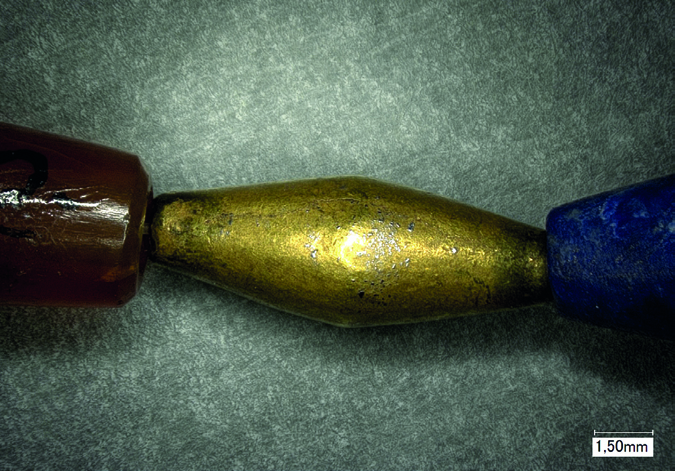
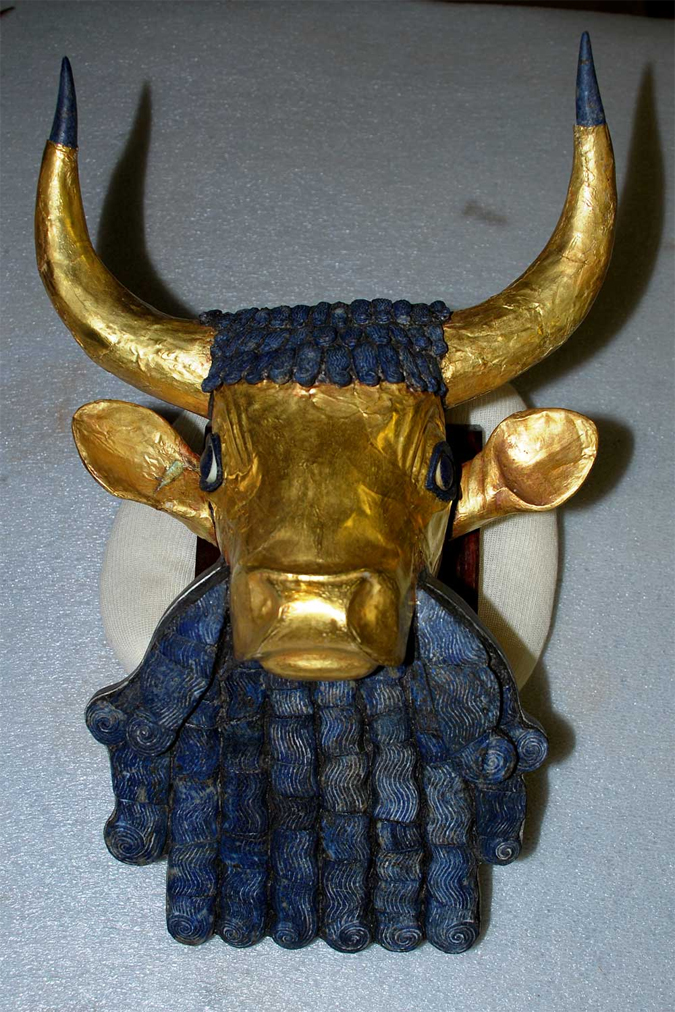
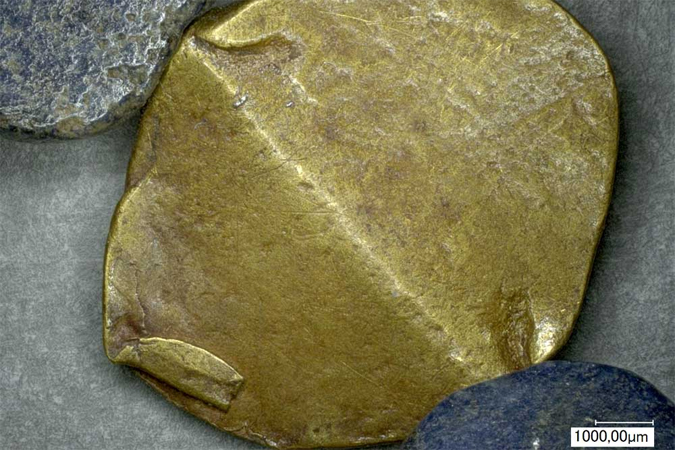






































 LIFE COMES FULL CIRCLE WITH SAARANSH
LIFE COMES FULL CIRCLE WITH SAARANSH





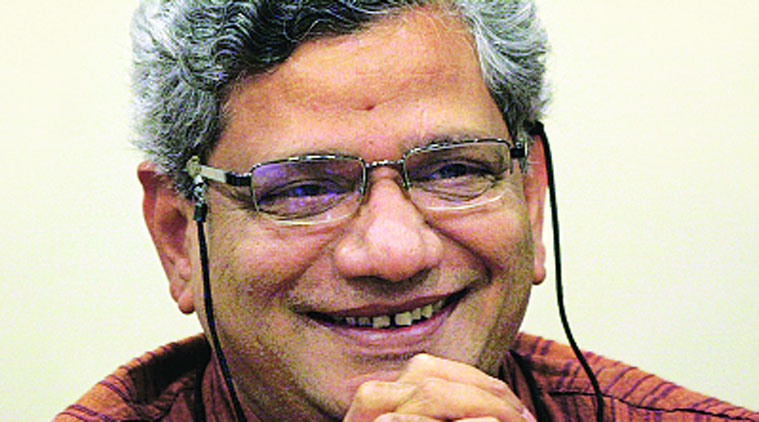
.jpg)

 Ancient Greek tetradrachm coin from Akragas, 410 BCE, with a grasshopper on the right.
Ancient Greek tetradrachm coin from Akragas, 410 BCE, with a grasshopper on the right.

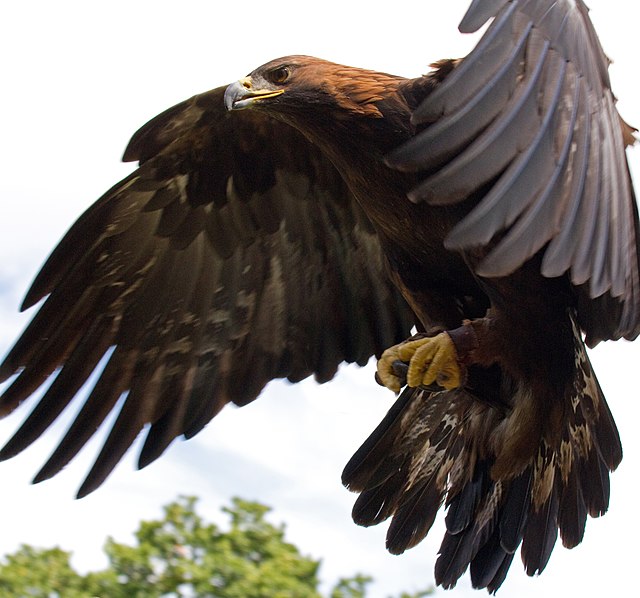

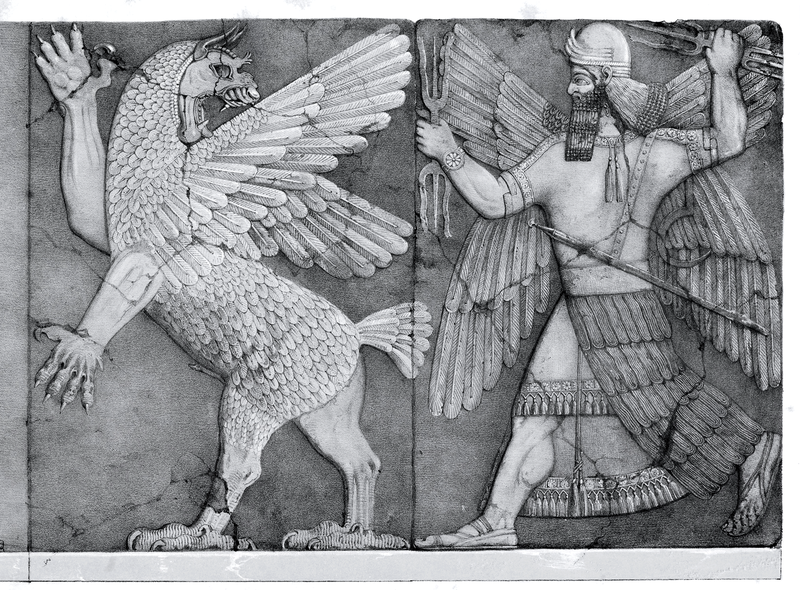





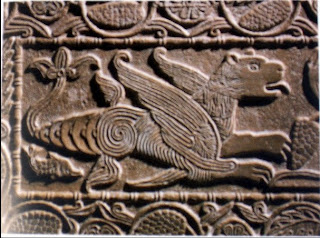

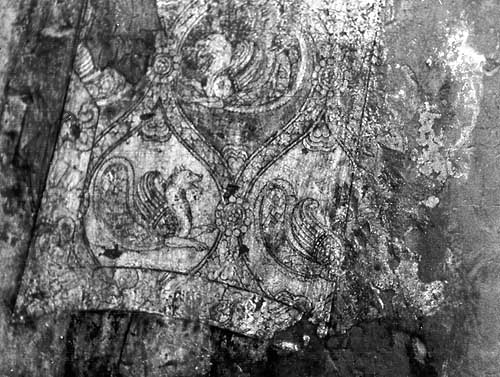
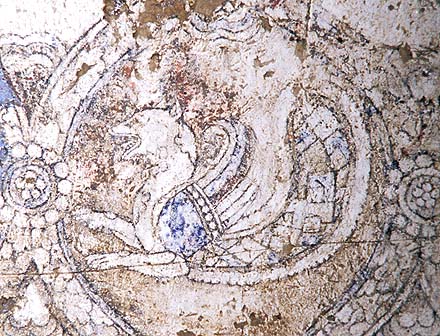
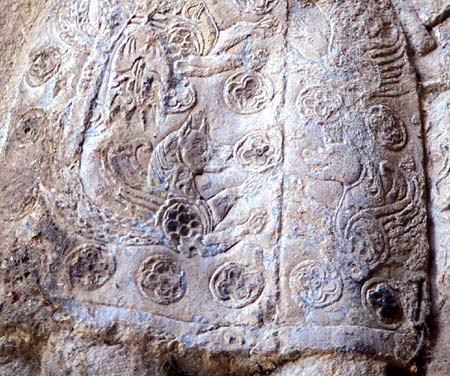
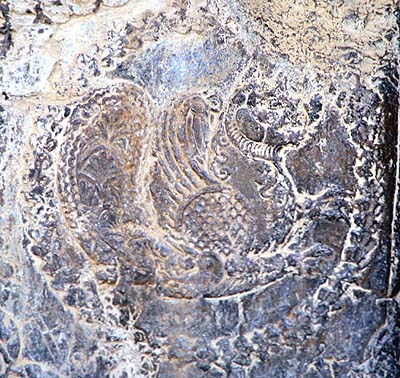
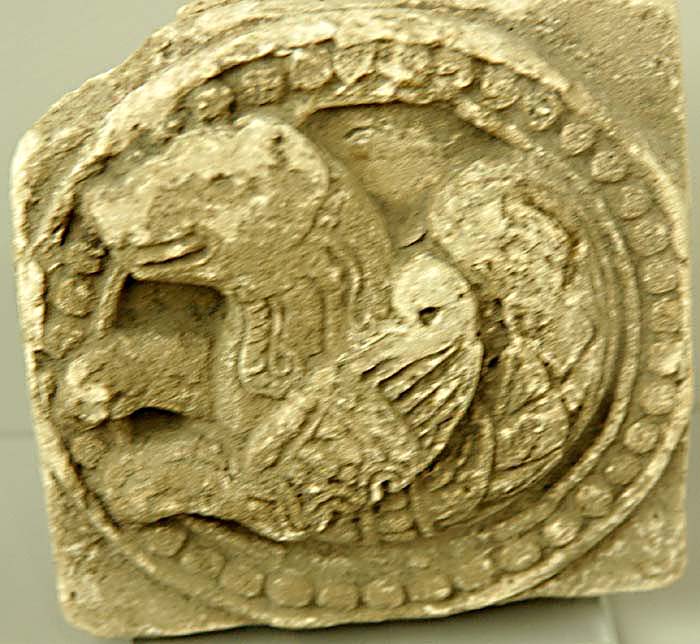
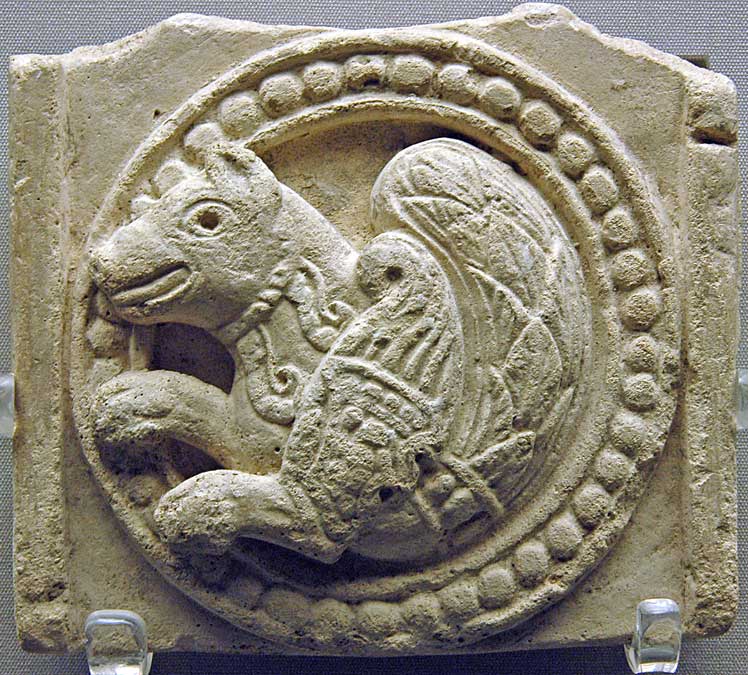



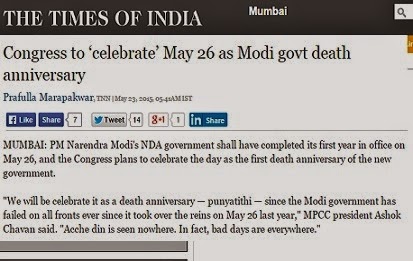


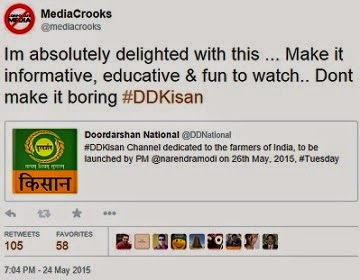

Reply
Reply
Reply
Reply
Reply
Reply